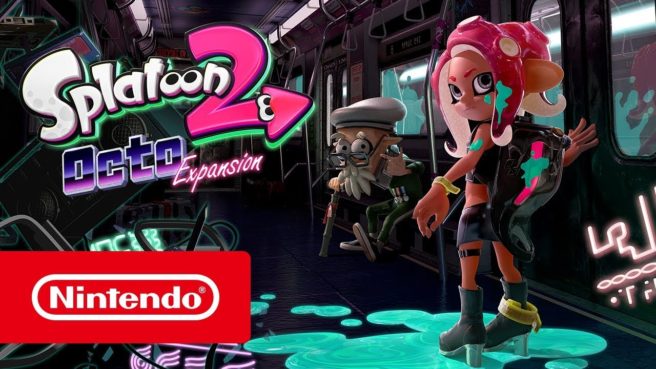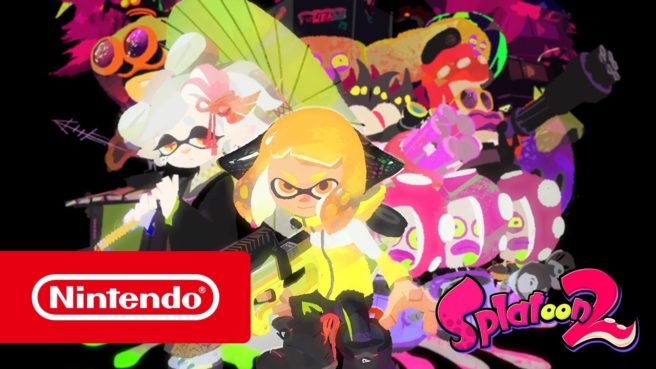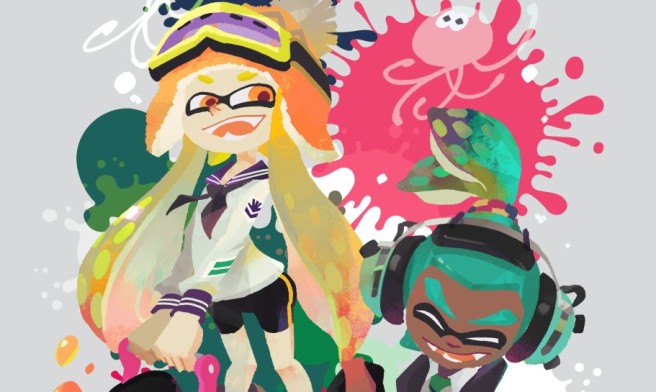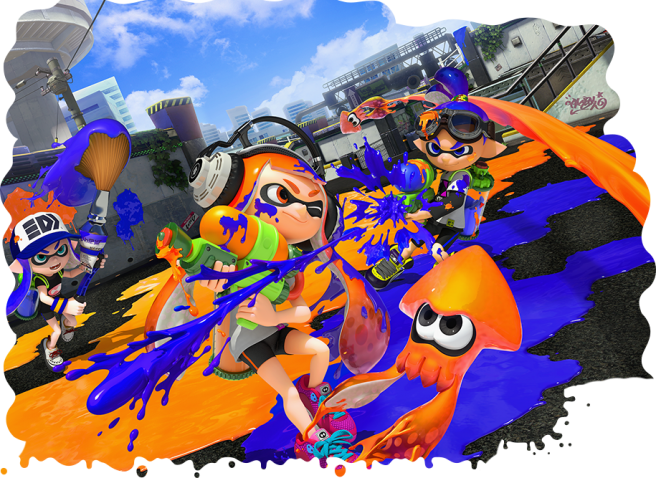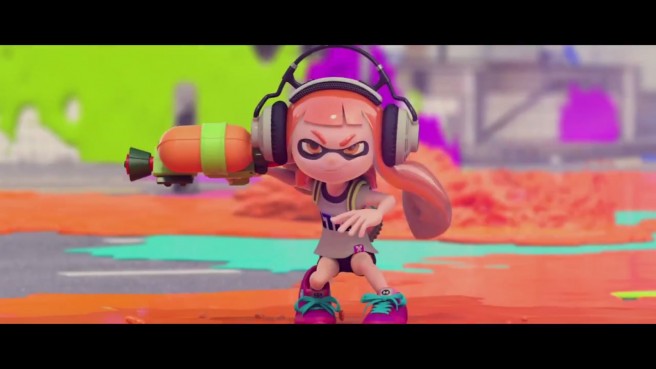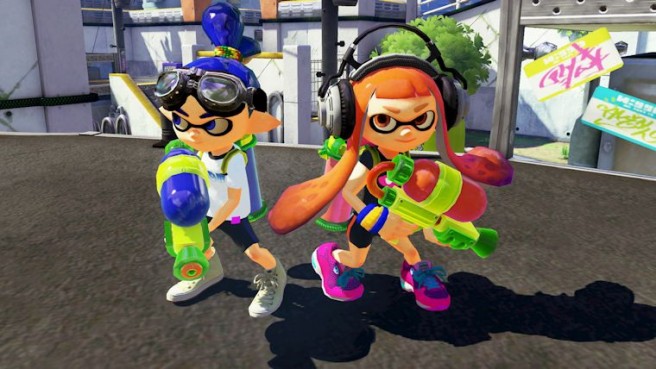SNK Heroines devs on choosing characters, female Terry Bogard, sequel interest, more
Posted on 6 years ago by Brian(@NE_Brian) in News, Switch | 0 comments
In a recent issue of Famitsu, developers from SNK Heroines: Tag Team Frenzy were brought in to discuss the new fighter. Art director Yusuke Amano, sound director Mayuko Hino, and director Kaito Soranaka participated in the talk.
We’ve prepared a complete transcript of the interview, which goes over how the team went about choosing characters, including a female version of Terry Bogard, interest in making sequels, and much more. You can read it below.
Splatoon 2 team on busy dev cycle, Rank X, plus Octo Expansion difficulty, Agent 8 design, more
Posted on 6 years ago by Brian(@NE_Brian) in News, Switch | 0 comments
Splatoon 2 is celebrating its first anniversary. As a way of highlighting the occasion, Famitsu published a lengthy developer interview in last week’s issue. The Japanese magazine caught up with producer Hisashi Nogami, director Yusuke Amano, director/art director Seita Inoue, director/lead programmer Shintaro Sato, and sound designer Toru Minegishi.
The team shared some interesting information about the hectic development cycle for Splatoon 2, Rank X, and more. There’s also plenty of Octo Expansion talk, including the difficult and the design for Agent 8.
Splatoon 2 devs on improvements and adjustments from the first game, Salmon Run, story, future updates
Posted on 7 years ago by Brian(@NE_Brian) in News, Switch | 19 Comments
Famitsu published a lengthy Splatoon 2 feature this week. Among the coverage was an interview with four of the game’s developers. Art director Seita Inoue, lead programmer Shintaro Sato, director Yusuke Amano, and producer Hisashi Nogami participated in the talk.
The developers weighed in on Splatoon 2’s improvements and adjustments from the first game, the new Salmon Run mode, the story, and future updates. Among the things discussed were Nintendo’s approach to Salmon Run, how Nintendo considered announcing a Splatoon sequel during the first game’s final Splatfest, a tease of more new weapon categories, and more. The developers were even asked if Marina is an Octoling.
You can find a comprehensive summary of important points from Famitsu’s interview below.
More: Hisashi Nogami, Seita Inoue, Shintaro Sato, Splatoon 2, top, Yusuke Amano
Hero Mode has been “expanded considerably” in Splatoon 2, dev says
Posted on 8 years ago by Brian(@NE_Brian) in News, Switch | 8 Comments
One of the surprising standout elements of the original Splatoon was Hero Mode, the game’s single-player campaign. For Splatoon 2, Nintendo is bringing it back and expanding it further.
Director Yusuke Amano spoke about the upgraded Hero Mode in this month’s issue of GamesTM. Pretty much all aspects have been “expanded considerably,” according to the developer.
Amano said:
More: interview, Shintaro Sato, Splatoon 2, top, Yusuke Amano
Splatoon devs share background info on stages, talk about the end of updates, more
Posted on 9 years ago by Brian(@NE_Brian) in News, Wii U | 9 Comments
This week’s issue of Famitsu has more coverage of Splatoon. There isn’t any news about the game itself (which was to be expected), but there is a 4-page interview with the game’s developers. Famitsu caught up with producer Hisashi Nogami plus co-directors Tsubasa Sakaguchi and Yusuke Amano. They shared some interesting background information about stages, spoke about the end of updates and why they’re coming to a close, and more.
There is quite a bit here, so let’s get right to it. Head past the break for a summary of the interview.
– Most of the stages in Splatoon are based on marine products, but only Under Deca Line Girder Bridge (Urchin Underpass) isn’t. It’s based on Jujo Road, an actual road in Kyoto which is nearby Nintendo’s office. The ? kanji means ten, which can also become Deca in Greek. And ? means line, hence Deca-Line. Deca-Line is the name of the highway, and this stage is right underneath it, hence the “Under”.
– How the Deca-Line stage came to be included: art director Seita Inoue has a habit of sketching things nearby him. One day he drew a night view seen from the company building. When the development team was thinking about stage designs, they happened to find this sketch, and since it fitted many of the stage designs, it got picked. They were looking for a place with a realistic sense that has an origin of grey-toned neutral color and could be vandalized with colors.
More: Hisashi Nogami, interview, Splatoon, top, Tsubasa Sakaguchi, Yusuke Amano
Splatoon devs – single-player talk, unlikely for 3DS, still no voice chat plans, no paid DLC
Posted on 9 years ago by Brian(@NE_Brian) in 3DS, News, Wii U | 23 Comments
A few hours ago, Game Informer published a new interview with Splatoon co-director Yusuke Amano and producer Hisashi Nogami. The developers talked about things like the single-player campaign, why it wouldn’t work well on 3DS, and no plans for voice chat or paid DLC.
A good amount of Amano and Nogami’s can be found below. You can read the full interview over on Game Informer.
More: Hisashi Nogami, interview, Splatoon, top, Yusuke Amano
Splatoon devs on the map rotation, content updates, and more
Posted on 10 years ago by Brian(@NE_Brian) in News, Wii U | 18 Comments
In this month’s issue of Japanese magazine Nintendo Dream, there’s an interview with some of the Splatoon developers. That includes directors Yusuke Amano and Tsubasa Sakaguchi as well as producer Hisashi Nogami.
Nintendo Dream starts off by asking how matchmaking works. Amano mentions that rather than focusing on levels, the game pairs players with similar playstyles in Turf War. Levels are more of “an indicator for how long the person has played the game.”
Since Splatoon matches users together based on how they play, Amano notes that those who tend to splat enemies are likely to play together. Likewise, those who concentrate on painting rather than splatting are more likely to get paired up.
More: Hisashi Nogami, interview, Splatoon, top, Tsubasa Sakaguchi, Yusuke Amano
Splatoon devs on how Miyamoto wasn’t satisfied with the game’s original ideas
Posted on 10 years ago by Brian(@NE_Brian) in News, Wii U | 17 Comments
EDGE brought us a whole bunch of information about Splatoon in its latest issue. One topic covered by the magazine was the game’s development, and Shigeru Miyamoto’s thoughts on its early days.
Co-director Tsubasa Sakaguchi, producer Hisashi Nogami, and director Yusuke Amano spoke with EDGE about how Miyamoto wasn’t originally pleased with what the team had come up with Splatoon. Here’s what the three developers shared:
[After] the prototype phase, we had all these ideas about the height, the ink, the characters, and the image of the character and the squid. But we couldn’t kind of filter it down to a final result that would result in a simple, fun game. And during this period, we were being scolded by Mr Miyamoto all the time.
He was saying, ‘I don’t understand. What do you want to do? There’s no appeal to this game.’
We had the basics and then we were like, ‘Let’s add the hiding [in ink] feature; let’s add jumping; we need height, because it’s a 3D map.’ And then we thought, ‘We need to be able to shoot up and down.’ And we realised we’d added all this stuff, and we got confused. We didn’t know what the game was about.
Splatoon launches for Wii U on May 29.
Splatoon devs on the project’s origins, why squids were chosen
Posted on 10 years ago by Brian(@NE_Brian) in News, Wii U | 6 Comments
Famitsu published its full interview with the developers behind Splatoon on its website today. Producer Hisashi Nogami, director Yusuke Amano, and co-director Tsubasa Sakaguchi participated in the discussion.
Siliconera translated some excerpts from the interview. You can find a summary of what was shared below.
“Many staff members that have worked on Wii U launch titles are working on this game, so now that we have a grasp of the Wii U’s functions, it started out with discussions about wanting to make something new with what we already know. There were many plans, but the one that stayed until the end was Splatoon.”
– Nogami says that it was just around the time Sakaguchi finished working on Nintendo Land, and Amano with New Super Mario Bros. 2, that Splatoon’s plans began
– Wasn’t always about squid characters
– Originally had tofu-like square characters
– Eventually chose to make it a competitive 4-on-4 game that required spraying the environment with ink

